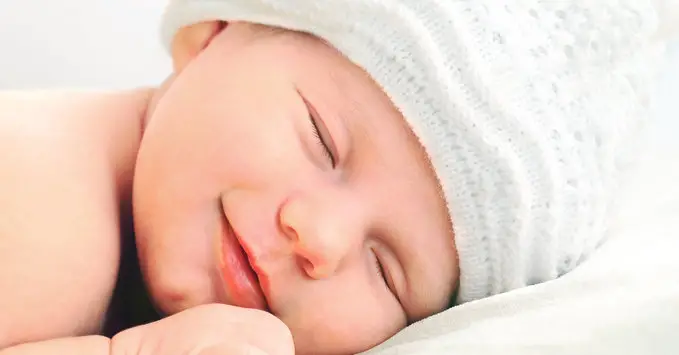Small babies produce more heat than adults. Their body temperature increases in the first months and peaks, around the sixth month, at 99.5, after which it starts to decrease gradually. During the first year, you should avoid exposing the baby to extreme heat or cold. Doctors recommend maintaining room temperature between 68 and 72 degrees during this time, avoiding letting the baby become overheated.

The rule of thumb for this age, as well as for smaller infants, is to dress your baby no more or less heavily than you dress yourself for a given outdoor temperature. The exception: Babies should wear hats in cool (not just cold) weather, and a sun hat is a must to protect a babys delicate skin and scalp from burning ultraviolet rays.
By the age of four or five months, the infection-fighting antibodies with which babies are born have diminished. Thus, a number of babies get their first colds during these months, particularly if they have older siblings or are exposed to other children in day care. Although it is widely believed that breast feeding protects babies against colds and other infections, this claim has not been fully proven.
To minimize the risk of infection, keep the baby away from people who have colds and other illnesses and, equally important, wash your hands frequently. Attempting to keep the babys hands and toys clean may be a losing battle, but is worth the effort, particularly when someone in the household has a cold or the flu.
The Growth Curve
In the three- to six-month period, infants continue to grow rapidly. The bodys fat stores increase, giving babies their characteristic and perfectly normal pudgy appearance. One of the fastest-growing organs during this period is the brain, which continues its development until the fourth year of life. The soft spot at the back of the skull (the posterior fontanel) closes by four months of age, while the soft spot at the front (the anterior fontanel) enlarges during the first few months of life, and closes when your baby is between nine and 18 months on average.
By about four months of age, many babies have doubled their birth weights. If your baby gains weight more slowly, there is no cause for concern provided the baby appears healthy and does gain some weight.
At three months, babies weigh around 12.5 pounds on average, and their length ranges from 22 to 25 inches. Between the ages of four and six months, they gain approximately one and one-half pounds a month and grow about an inch every month. Boys tend to be longer and heavier than girls. For a clear picture of how your baby grows during these months, see the growth charts in Volume II, A to ZEncyclopedia of Child Health & Illness.
Visiting The Doctor
During the three- to six-month period, the pediatrician should see your baby twice once at four months and once at six months. (Depending on your own pediatricians policies, these intervals may vary). During these well-baby visits, your child will be weighed and measured and his or her general development and health, including hearing and vision, will be assessed.
To evaluate the hearing, the doctor will ring a bell or make a loud noise behind the babys back and observe the response. The pediatrician can screen the babys vision by shining a bright light in the eyes and observing how the baby blinks and follows the light source.
Immunizations administered during this period are the oral polio vaccine, the diphtheria-tetanus-pertussis (DTP) vaccine, and the Hemophilus influenzae type B (HiB) vaccine at four months; and the DTP (as well as, in some cases, an additional dose of HiB vaccine) at six months.
Milestones For The Three- To Six-Month Period
As mentioned elsewhere in this book, each child develops at her own, unique pace. On average, three- to six-month-olds acquire the following skills in approximately the order given below. Most babies will do some of these things sooner than expected and some a bit later. Remember that variation is the rule.
Overall, though, the three- to six-month period is a time of tremendous development during which new abilities and awareness emerge almost every day. A number of thrilling firsts take place during this time the first laugh, the first gurgle, the first utterances that sound almost like words. Once a new ability appears, you may see the baby practice it over and over again. On the other hand, some babies seem to back off and send new skills underground for a while soon after they develop. Either pattern is normal.

